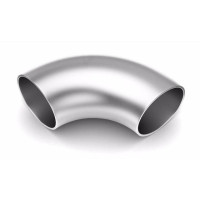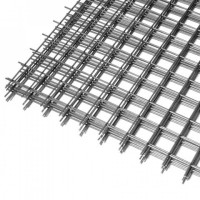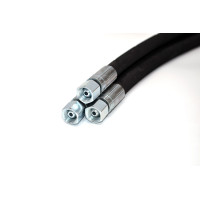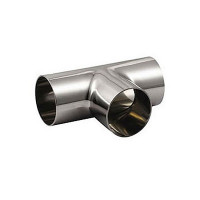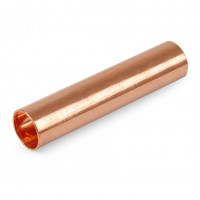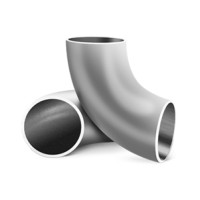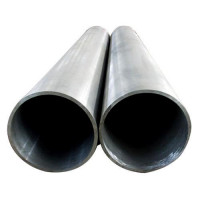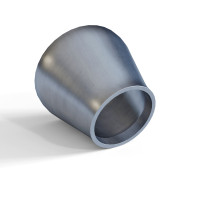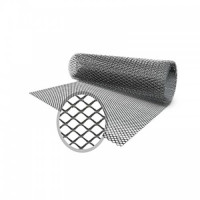Khmelnitsky strip steel calibrated, strip metal cutting, felling, tire (headquarters) steel, strip ferrous metal delivery st20, st45, 40X, 65G, 30HGSA, 9XS, U8A, R6M5
Steel strip is a kind of long-length rolled metal with a narrow rectangular shape of a solid section. Manufactured from structural carbon and alloy steels 4…80 mm thick and 10…200 mm wide. Possesses universal mechanical properties and well perceives hot and cold deformations. Accordingly, the steel assortment of the strip is quite extensive and is classified according to many criteria, especially since it is used as an independent building and structural material and serves as a blank for redistribution into other shaped profiles. Assortment of steel strip In the conditions of modern metallurgical enterprises, strip steel is produced in the form of pieces and coils of different lengths, using various types of metal processing and various steel alloys. According to the manufacturing method Rolled strip can be produced using different methods in terms of temperature effect and technology: hot and cold rolling; cutting sheet steel; forging. When buying, you should definitely pay attention to the method of manufacturing rolled metal. So, a chopped metal strip can often have burrs, which is unacceptable. And on the forged one there should not be cold hardening and inhomogeneous sections and, of course, diamond-shaped deviations in the shape of the section, besides, its metal is characterized by high strength and rigidity. Well, the cheapest and most versatile option is hot-rolled steel strip according to GOST 103. It finds an extensive and varied application and is used for redistribution into cold-rolled steel. Cold-rolled strip steel is characterized by improved surface quality and higher dimensional accuracy, but its price is also quite significant. By length According to this parameter, the dimensions of the metal strip can also be quite variable. Therefore, it is produced in rolls of a certain footage and in segments: measured length; unmeasured length; multiple measured length. According to the crescent shape of the strip For rolled products of this category, the crescent shape is of great importance, since it can reduce the service properties of the metal and negatively affect its decorative effect. Therefore, in terms of this characteristic, steel is classified into the following groups: up to 0.2% - high quality (AS); within 0.25 ... 0.4% - improved quality (BS); no more than 0.5% - normal quality (BC). Depending on the grade of steel Today, you can buy a steel strip made of alloys with various parameters of strength, toughness, ductility, heat resistance and corrosion resistance. For example, it is made from steels: carbon ordinary quality and high-quality - st2 ... st5 sp / ps, 08, 15 ... 80; low-alloy structural - 09G2, 09G2S, 14G2, 16GS, 17G1S, 14G2, 18G2AFps, 20X; alloyed structural - 14KhGS, 15KhSND; high-alloyed special purpose - 15 Kh11MF, 25Kh2M1F (EI 723), instrumental carbon - U7 ... U12, 9XS, KhVG and alloyed - 4KhMFS, 7KhG2VMF, 5KhNM, 3Kh2V8F. Classification of steel strip by material and purpose The diverse use of strip metal and the use of steels of different grades for its manufacture necessitates the application of the principle of classification based on these factors. Let's consider in more detail. Galvanized strip Rolled products with a protective and decorative coating. According to GOST 9.307, the base metal should not have air capsules and other similar defects. Therefore, galvanized steel strip, as a rule, is made of cold-rolled steel. The coating is applied hot, as it is particularly resistant to mechanical damage and retains plasticity and ability to regenerate for a long time. Hot-rolled steel strip for general purposes Produced from ordinary quality steels at hot rolling mills. There are no special requirements for the accuracy of dimensions, the magnitude of the blunting of the corners and the quality of the surface. The length of such a roll varies from 3 to 10 meters. Strips made of heat-resistant and corrosion-resistant steel Rolled metal for special purposes, since, despite improved service properties, it causes increased labor intensity of technological operations and machining. Corrosion-resistant grades are distinguished by a high content of alloying components and resist intercrystalline, pitting, pitting and general corrosion very strongly. Heat-resistant steels based on iron-nickel and nickel are able to withstand prolonged exposure to 600 ° C and above, but are welded with some difficulties, since their metal is prone to cracking in the heat-affected zone. Hot-rolled strips made of carbon steel The use of iron-carbon alloys that do not contain alloying additives has a positive effect on the price of a metal strip. It is characterized by an optimal combination of good weldability, ductility and toughness, therefore it is considered the most popular material. ABOUTPlease note that hot-rolled steel from unalloyed tool grades is also classified into groups depending on the nature of further processing: for cold drawing and hot forming; for cold machining on milling, planing and other machines. Hot-rolled spring strips They also have a specialized application and are characterized by an increased yield strength. They have the ability to return to their original position and shape after significant compressive and bending deformations. This is the most expensive metal strip and the price per meter depends on the steel grade, crescent, surface quality and finish of corner blunts and edges. Hot-rolled broadband products One of the standards specifying the range of these products is GOST 82-70. In accordance with it, a steel strip is produced in the range of thicknesses of 6 ... 60 mm with a width of 200 to 1050 mm on hot rolling mills. Such dimensions and manufacturing method impose certain restrictions: the limit of deviations in thickness should lie in the range of 0.5 ... 0.8 ÷ 0.3 ... 0.6 mm; the limit of deviations in width on average cannot exceed ± 2.0 ... 3.0 mm; curvature per 1 meter of length for class A - 1 mm, for class B - 2 mm; flatness should not exceed 0.3% over the entire length. Structural steel strips Produced by cold and hot rolling, forging and cutting from carbon and alloyed alloys of the structural group. Therefore, they are characterized by the ability to perfectly weld and lend themselves to various types of machining using cutting tools and tooling. They also have fairly high tear and load resistance. The use of steel strip The main advantage of strip steel, which determines its widespread use, is the possibility of using it as a semi-finished product and even as a finished structural element. It requires minimal technological and labor costs for processing and makes it possible to create structures and metal products of varying complexity. Elements of various metal structures When creating welded and collapsible structures for industrial, agricultural and domestic purposes, steel sheets and a variety of rolled products and shapes are used. But only through the use of strip steel, it is possible to significantly reduce weight and at the same time provide the necessary strength and artistic expressiveness. It forms the basis of hanging elements working in tension, and is able to bear the load in the span. Such properties, combined with affordable cost, led to the use of a metal strip in the creation of: canopies, cornices and visors; window bars, gates and gates; stair railings, balustrades and railings; hull plating of river and sea vessels and aircraft; bridges, viaducts, flyovers and platforms; boxes and tanks; masts and towers. Strip metal often acts as a blank for corners, channels and other bent profiles. It is also possible to use a metal strip in pipe production, where it is the starting material for the manufacture of longitudinally welded pipe products of small and medium diameter, as well as spiral welded pipes of various sections. And by stamping, nuts, mounting brackets and stops are made from it. Mechanical engineering and instrument making Strip metal from heat-resistant austenitic steels is used for the main parts of power equipment and gas turbines. Rolled products from carbon and low-alloy steels are in demand in the manufacture of machine tools, ultrasonic installations, laboratory test benches, production and transport equipment. For grounding of buildings The use of a steel strip for grounding greatly simplifies the creation of the circuit and ensures its durability and high current conductivity. It: can be used in networks with grounded and isolated neutral; if necessary, painted with paints and varnishes; has good maintainability and resistance to electrochemical corrosion. Design and forging Black rolled metal, including strip, is ductile, bends well and is able to take various shapes, and its surface is distinguished by improved adhesive ability. Therefore, it is covered with polymer and metal coatings, and blacksmiths use it to make wrought iron doors, benches, chests and other author's art objects. As a metal product, a decorative metal strip is used to decorate barbecues and garden benches, gates and gates. And stainless steel products are used as decor for residential, office and industrial premises. Furniture Industry This industry also uses stainless steel and carbon steel strips. It makes it possible to strengthen the strength of the frames of beds, sofas and armchairs, and in cabinet furniture it is mainly used in the form of functional fittings made by stamping.
The main advantages of using steelstrips As long products, the metal strip has a small weight, but at the same time it is characterized by high resistance to torsional and bending moments, to compressive and tensile deformations. In addition, its simple form greatly simplifies calculations and design. At the same time, it is characterized by: good weldability, stamping and machinability; fairly high corrosion resistance; low metal consumption and lightness; universal industriality; low cost; durability.
Steel strip production technology
Depending on the technological features, there are two main methods for manufacturing a strip:
hot rolling;
cold rolling.
The essence of hot rolling is the deformation of the heated billet. At temperatures above 1000 ° C, steel acquires increased ductility, so it is easier to give it the desired shape. In this case, it is possible to ensure high productivity of the process due to the increased reduction of the roll. In addition, when the workpiece is heated, the formation of various surface defects is minimized.
The billet for hot rolling is square bar metal. Previously, they used rolled billets from blooming, but now almost all enterprises have switched to cast steel from continuous casting machines. Before rolling, the steel is heated to hot rolling temperatures (the temperature regime is chosen in such a way as to ensure normal technology at the end of the process, since the rolled product loses heat at each technological stage).
The process of gradual deformation from a square billet to a strip
The process of deformation of a square blank to a strip
Next, the workpiece is fed into the roughing stands of the section mill. Technological lines of different design can be used for strip rolling. Many plants still operate outdated linear mills, but one of the most modern approaches is rolling strip on continuous strip mills. During the technological cycle, the workpiece is deformed by horizontal and vertical rolls. As a result, it becomes thinner and longer. Also in the production process, the width of the roll and the shape of the edges are adjusted.
Movement of hot-rolled strip on a conveyor belt
Hot Strip Production Process
Cold-rolled strip is produced from hot-rolled strip by deformation without heating it. Because of this, there is less reduction in rolling stands, but it turns out to effectively grind the grain (in this case, the strength of the metal increases), to ensure dimensional accuracy and a given surface roughness.
Stage of cold rolled strip production
Obviously, such products are of better quality, but also more expensive than hot-rolled strip. For additional surface protection, the strip can be hot dip galvanized.
Cold-rolled lenok is used to solve a wide range of problems. In particular, various machine building parts are stamped and bent from it, electric-welded pipes, bearings, as well as a sheath of flux-cored wire, which is filled with ferroalloys and used to introduce alloying and deoxidizing additives into steel, are produced from it.
In general, the following main ways of using the band should be distinguished:
hot-rolled strip serves as a blank for the production of fasteners, hardware, stamped parts, bent profiles and cold-rolled strip;
large-width cold-rolled strip (400-500 mm) is used as a blank for the manufacture of large-diameter spiral-seam electric-welded pipes or straight-seam rolled pipes;
the strip is used for packing wooden boxes, containers, for grounding systems and other auxiliary tasks;
in domestic construction, narrow strips are in demand for the manufacture of forged gratings, railings, fences, doors, benches, when arranging light elements of frame structures, etc.
What is a metal shank
The dimensions of metal tires (strips) are determined depending on the thickness, length and cross-sectional area.
The dimensions and technical characteristics of tires are regulated by the standards GOST 434-78, GOST 15176-89, TU 48-21-164-85.
A metal bus is a flat rolled metal product with a solid rectangular cross-section, which is used in the machine-building and electrical industries, in equipping enterprises of the chemical and oil and gas industries.
Range of most common tire sizes used:
tire thickness: from 3.0 (mm) to 300 (mm);
tire width: from 4.0 (mm) to 250 (mm);
sectional area: from 159.52 (mm2) to 1498.10 (mm2).
Shinka is, in fact, the rim itself. Often this is the only thing that a jewelry ring consists of, for example, if we are talking about an engagement “classic”. Outside, the bezel can have different processing - smooth polishing, matting, texture, diamond cut, etc. From the inside it is always smooth. The size of the ring is the diameter of the shank, standard sizes are from 14 to 24 mm, one size is 0.5 mm.
The shank can be monolithic, seamless. These are obtained if the rings are made by casting or using the “pipe-cutting” technology. Another variantt - soldered bezel. This is how rings are made in small workshops, incl. at the now popular master classes. Soldered tires are less reliable. The bezel can be made from one or more gold alloys. The second option is called combined, two-alloy, bicolor.
Today, among all varieties of current-carrying products made of metal, copper and aluminum tires are in high demand. They are one of the main connecting elements of many power systems (electrical installations), and are also widely used in electrical engineering and construction. Busbars made of copper and aluminum can significantly reduce the loss of electricity during the passage of current through the conductor, which led to their use in electrical and radio engineering, in switchgear, as elements of electrical circuits and powerful conductors, as well as in the production of flat busbars. The use of busbar connections saves time both in the design and manufacture of equipment. Mounting the tires is easy, they do not need to be "adjusted" to size or cleaned, and they do not require the use of special crimping elements. Tires are also able to dampen vibration without transferring it to other elements of the system. Therefore, they are often used in place of cables in areas of the system that are subject to vibration. To make it easier to choose between aluminum and copper bars, below are their main differences, advantages and disadvantages. Comparison of copper and aluminum bars Advantages of aluminum bars The main advantages of aluminum bars over copper bars are their relative cheapness and lightness (the density of aluminum is four times less than copper).
Advantages of Copper Busbars The conductivity of copper is about 1.6 times higher than that of aluminium. Other things being equal, this allows: In addition, important features of copper electrically conductive busbars are such qualities as high ductility and corrosion resistance. The use of such products greatly simplifies electrical work and, in general, the design of devices in which they are used. This is largely due to the characteristics that copper tires have:
Due to the high corrosion and chemical resistance, the products can be used in almost any environment. With regard to the recycling of copper, it is absolutely environmentally friendly - the material can be recycled many times. Disadvantages of aluminum busbars Conductive aluminum products are used more often than copper products. But this is explained not by the best qualities of aluminum, but by its low cost and lightness. Unfortunately, it also has many disadvantages. The high oxidizability of the material in the open air can lead to the appearance of an oxide film on the surface of the conductor, which has a high resistance and is poorly conductive. Moreover, aluminum is brittle and can break with just a few bends.
For these reasons, there are limitations to the use of aluminum busbars. Such products cannot be used in machines and mechanisms with moving parts, as well as in equipment with a vibrating body. Moreover, unlike copper products, aluminum busbars are not able to withstand the same continuous current loads. Disadvantages of copper busbars The only disadvantages of copper busbars are their high cost and greater weight of products of the same size. But the latter is largely compensated by the fact that in order to ensure the same conductance characteristics in the case of copper bars, products of much smaller dimensions are required, which means that the difference in mass is not so great.
In the construction of fences, ceilings, and even when reinforcing, strips are widely used in civil and industrial construction. This type of rolled metal was not bypassed by the industry either. Products are often made from it by stamping - various parts, hardware elements, components in cars and machine tools, and more. etc. Depending on the field of application and the required characteristics, steel tires can be manufactured by several methods - hot or cold rolling, as well as cutting a metal sheet into strips.
In addition, strips are widely used in the manufacture of other types of rolled metal products. They can be used as blanks in the production of profiled electric-welded pipes, angles, channels and even squares. Tires differ in the composition of the metal from which they are made, overall dimensions and permissible deviations from them.
Another type of flexible busbars are copper braided busbars. Such a busbar is woven from copper strips and is very flexible. It is used in places subject to extreme vibration, such as transformer bus bridges. These busbars are also used to connect various equipment to busbar trunking and busbar lines. Braided busbar contact pads come with or without drilling. Braided tires are also produced, made by a special method - diffusion welding under pressure. Thin-layer materials are weldedby passing a direct current under pressure through them. Such tires are also called lamellar tire expansion joints or flexible lamellar tires. They have a high current conductivity and less heat dissipation.
No questions about this product, be the first and ask your question.


